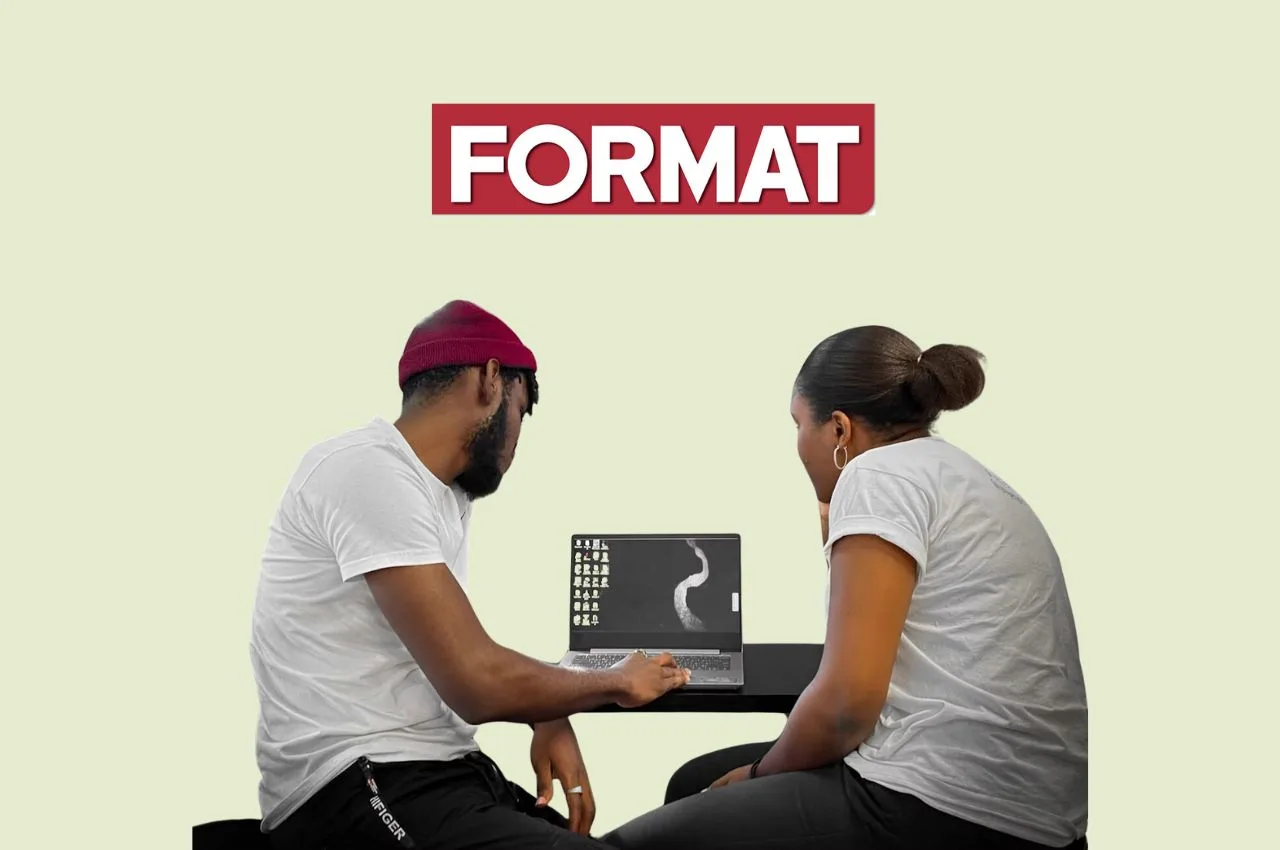SIWES Report Format: Sample and Template in Nigeria

The general format for the SIWES report is:
- Title Page
- Declaration (optional)
- Certification (optional)
- Dedication
- Acknowledgements
- Table of Contents
- List of Figures (if applicable)
- List of Tables (if applicable)
- List of Plates (if applicable)
- List of Abbreviations (if applicable)
- Abstract
- Chapters
- References
You have to bind your report using green or blue cover.
Your write-up’s must be typed on standard A4 size sheet with a justified margin of at least 1.25 inch at the side of each paper, and at least 1.0 inch margin at the top and bottom of each paper.
Font size should be 12, font type should be Times New Romans, with double line spacing.
The preliminary pages should be numbered as i, ii, iii,…while the main pages should be numbered as 1, 2, 3,….
Your SIWES report should not be less than 20 pages.
20 – 60 pages is okay for your report writing.
Your school, departmental lecturers, or supervisors may instruct and give you a specific page limit to use in your report writing.
You may be told that your report shouldn’t be less than 40 pages.
If so, obey and abide by the rule.
Also, your lecturer or supervisor can instruct you to increase your report font size to 13 or above instead of 12 (the standard font size).
This can be due to eye defects or choice.
Documents printing is within the range of ₦10 – ₦100 in most cyber cafes and business centers in Nigeria.
If your report is 30 pages and you print at ₦50 per page, i.e. 30 pages X ₦50 = ₦1500
If you should include report binding, which is usually ₦100 – ₦1000, let’s say you bind your report at ₦300.
Then, you’ll likely be spending ₦1800 (i.e. ₦300 + ₦1500) in printing out just one report copy.
You may decide to print out two report copies.
One copy for yourself and the other copy you will submit to your school, department, or lecturer (supervisor).
You may also decide to print and have only one report copy, which will be the one for submission.
Maybe you don’t have money or probably you see no reason and usefulness of getting additional report copy.
1. Title Page
This the first page of the report and contains key information about you, your institution, and the organization where your industrial training took place.
It is essential because it provides a clear introduction to the report.
Here is what is included:
- Report title.
- Your full name.
- Your school’s registration or matriculation number.
- The name of the program or course you are studying at the institution (e.g., Bachelor of Science in Biochemistry).
- The name of the university where you are studying.
- The company, organization, or institution where you did your industrial training.
- The start and end date of your industrial training (e.g., July 2025 – December 2025).
- The name of your organization supervisor (if applicable).
- The date you are submitting the report (e.g., July 18, 2025).
- Your institution/departmental logo (optional).
2. Certification
This is an official section of your report that verifies your participation in industrial training.
It contains a testimony-like statement with your full name, matriculation/registration number, and/or department.
It should be duly signed by you and your organization supervisor(s) and/or SIWES coordinator.
Many tertiary institutions in Nigeria require your workplace official stamp for authenticity.
3. Dedication
This is where you express gratitude to the people that inspired or supported you during your industrial training.
You can dedicate your report to God, your parents, mentors, or supervisor whose unwavering support, guidance, and encouragement have been invaluable throughout your training period.
Keep it brief and captivating.
4. Acknowledgements
In the acknowledgement section of your report, express gratitude to the individuals, institutions, or organizations that supported you during your industrial training.
This is more formal than the Dedication Page and includes appreciation for supervisors, lecturers, and colleagues.
It should not be more than a page.
5. Table of Contents
This provides a structured outline of your report’s sections and page numbers for easy navigation.
Each page number is derived from the page number of the heading.
Check this when other pages are been completed to see whether the page numbers tally.
Your TOC page should be clear, well-organized, and formatted professionally.
| Content | Page Number |
| Title Page | i |
| Certification Page | ii |
| Dedication | iii |
| Acknowledgements | iv |
| Abstract | v |
| Table of Contents | vi |
| List of Figures (if applicable) | vii |
| List of Tables (if applicable) | viii |
| Chapter One: Introduction | 1 |
| 1.1 Background of the Study | 1 |
| 1.2 Objectives of SIWES | 2 |
| 1.3 Significance of SIWES | 3 |
| 1.4 Scope of the Industrial Training | 4 |
| Chapter Two: Organizational Profile | 5 |
| 2.1 Brief History of the Organization | 5 |
| 2.2 Organizational Structure | 6 |
| 2.3 Services Rendered | 7 |
| Chapter Three: Training Activities | 8 |
| 3.1 Description of Assigned Tasks | 8 |
| 3.2 Tools and Equipment Used | 9 |
| 3.3 Challenges Encountered | 10 |
| Chapter Four: Observations and Lessons Learned | 11 |
| Chapter Five: Conclusion and Recommendations | 12 |
| 5.1 Summary of Experience | 12 |
| 5.2 Conclusion | 13 |
| 5.3 Recommendations | 14 |
| References | 15 |
| Appendices (if applicable) | 16 |
6. List of Figures
In this page, list all the figures (such as charts, graphs, tables, diagrams, images, etc.) that appear throughout your report.
The purpose is to provide an easy reference for readers to locate specific visual content included in your report.
7. List of Tables
This page provides a clear and organized listing of all the tables included in your report.
This makes it easier for a reader, your supervisor and lecturers to find and refer to specific tables throughout the document.
8. List of Plates
This page should list all the “plates” included in your report.
A “plate” refers to photographs, illustrations, or any other visual content that is not classified as a figure or table.
9. List of Abbreviations
This page is a section that lists and defines all the abbreviations, acronyms, or short forms used throughout your report.
This helps readers understand the meaning of the abbreviations without needing to guess or look them up.
10. Abstract
This should contain summary of the activities carried out by you in various units/departments at your workplace during the course of the training.
Your ‘ABSTRACT’ should be single line spacing.
11. Chapters
The chapters in a standard SIWES report varies with tertiary institutions in Nigeria guidelines or specific program requirements.
Each chapter in your report helps to give a comprehensive view of your industrial training experience and how it relates to your academic course.
- Chapter one should explain the history, aims and objectives of the SIWES program, and what you aim to achieve during your training.
- Chapter two should give an overview of the organization where your training took place. Provide a detailed profile of the organization, its departments, functions, and key personnel.
- Chapter three should describe your daily tasks, the skills learned, and any challenges you faced during the training.
- Chapter four should highlight your observations and lessons learnt during your training period.
- Chapter five should summarize your overall experience, highlights key takeaways, and provides suggestions for future improvements to the program.
12. References
In this section, you will list all the sources you have cited or used to gather information while preparing your report.
These could be books, articles, websites, reports, or even personal interviews.
Proper referencing is needed to avoid plagiarism and give credit to the original authors of the ideas or information you used.
References should be APA format of reference writing.







this very helpful
good morning
It very much helpful